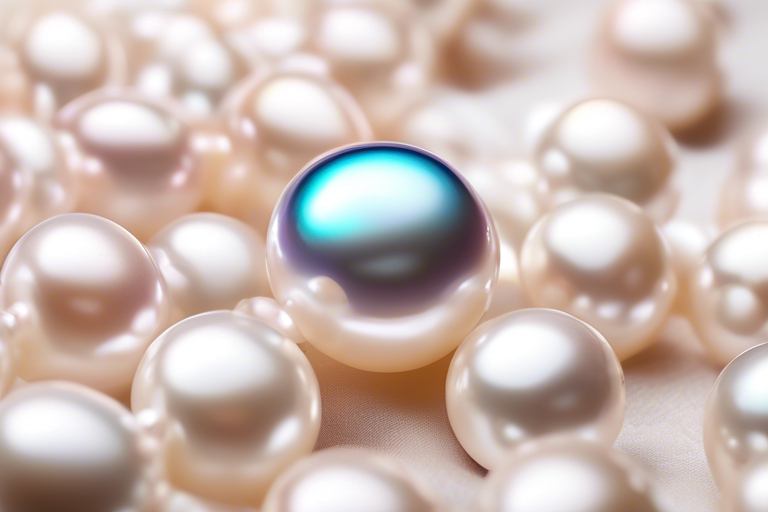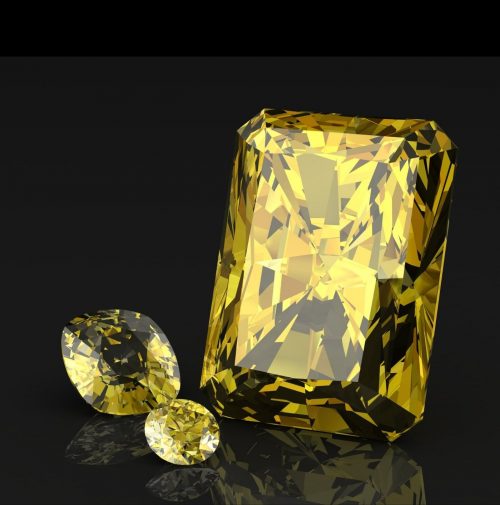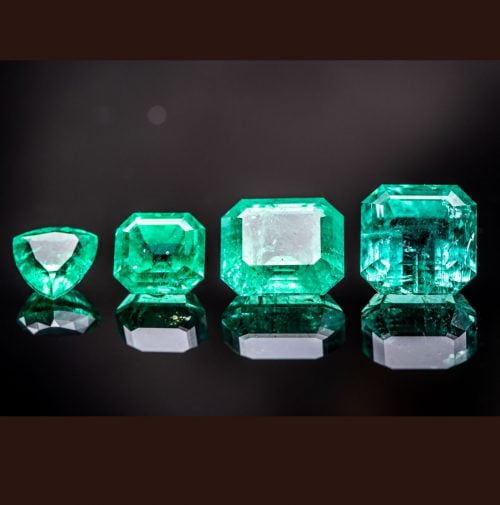The Luminous Beauty of Mother of Pearl: Unlocking the Secrets of this Natural Gem

Introduction
Discover the enchantment and allure of mother of pearl, a natural gem that captivates with its luminous beauty and unique iridescence. Formed from the inner layer of mollusk shells, this exquisite material has been prized for centuries for its elegant and ethereal appeal, often used in jewelry, decorative objects, and artistic creations.
What makes mother of pearl truly fascinating is its iridescent play of colors, ranging from shimmering shades of white, blue, and pink to hues of green, silver, and purple. Its mesmerizing luster changes with the angle of light, creating a captivating visual effect that evokes a sense of mystery and wonder.
This stunning gem is not only admired for its aesthetics but also valued for its durability and versatility. With its natural resilience and resistance to scratches, mother of pearl is a popular choice for creating long-lasting and timeless pieces of jewelry that can be cherished for generations.
Join us on a journey as we unlock the secrets of mother of pearl, exploring its rich history, distinctive characteristics, and the artisanal craftsmanship behind its transformation into exquisite works of art. Immerse yourself in the luminous beauty of this natural gem and discover why it continues to captivate hearts around the world.
Formation and Characteristics of Mother of Pearl
Mother of pearl, also known as nacre, is formed through a fascinating process within the shells of certain mollusks, such as oysters and abalone. These creatures possess a remarkable ability to produce this unique material as a protective lining for their shells.
The formation of mother of pearl begins when the mollusk secretes a substance called calcium carbonate, which accumulates in thin layers. Over time, these layers build up, creating a strong and resilient structure. The iridescence of mother of pearl is a result of light interacting with these successive layers, causing interference and refraction that produces its characteristic play of colors.
In addition to its captivating appearance, mother of pearl also possesses several desirable characteristics. It is known for its hardness, ranking between 2.5 and 4.5 on the Mohs scale, making it a durable material for jewelry and decorative items. Its smooth and lustrous surface adds to its appeal, while its natural resistance to scratches ensures that it can withstand the test of time.
Historical Significance of Mother of Pearl
Throughout history, mother of pearl has held a special place in various cultures around the world. Its beauty and rarity have made it a highly prized material, often reserved for royalty and the elite. In ancient Egypt, mother of pearl was associated with the moon and was believed to bring blessings and protection.
During the Victorian era, mother of pearl became a symbol of wealth and luxury. It was frequently used in jewelry, particularly in combination with precious metals and gemstones. The delicate and ethereal qualities of mother of pearl perfectly complemented the romantic and sentimental style of the time.
In Chinese culture, mother of pearl has long been revered for its auspicious properties. It is believed to bring good luck, prosperity, and protection against negative energy. It is often used in traditional Chinese medicine and feng shui practices to promote balance and harmony.
Symbolism and Cultural References
Mother of pearl holds symbolic significance in many cultures and religions. In Christianity, it is associated with the Virgin Mary and is often used to depict her purity and divine grace. In Hinduism, it is considered a symbol of love, beauty, and prosperity, and is associated with the goddess Lakshmi.
In Native American cultures, mother of pearl is highly regarded as a sacred material. It is believed to represent the moon and is often used in rituals and ceremonies to connect with the spiritual realm. The luminescent qualities of mother of pearl are seen as a reflection of the divine and are believed to bring protection and healing.
Uses of Mother of Pearl in Jewelry and Accessories
One of the most popular uses of mother of pearl is in the creation of exquisite jewelry pieces. Its iridescent beauty and durability make it a sought-after material for necklaces, earrings, bracelets, and rings. Mother of pearl can be carved, shaped, and polished to create intricate designs and patterns, adding a touch of elegance to any jewelry collection.
In addition to jewelry, mother of pearl is also used in the production of various accessories and decorative items. It can be found in watch dials, buttons, cufflinks, and even inlays for musical instruments. Its versatility and timeless appeal make it a favorite choice for designers and artisans across different industries.
Care and Maintenance of Mother of Pearl Items
To ensure the longevity and beauty of mother of pearl items, proper care and maintenance are essential. Here are some tips to help you preserve the luster and integrity of your mother of pearl jewelry and accessories:
- Avoid exposing mother of pearl to harsh chemicals, such as perfumes, hairsprays, and cleaning agents. These substances can damage the delicate surface of the gem.
- Clean mother of pearl gently with a soft cloth dampened with water. Avoid using abrasive materials or harsh cleansers that can scratch or dull the surface.
- Store mother of pearl items separately from other jewelry pieces to prevent scratching. You can wrap them in a soft cloth or place them in a padded jewelry box.
- Avoid exposing mother of pearl to extreme temperatures and direct sunlight, as these can cause discoloration and fading over time.
By following these simple guidelines, you can ensure that your mother of pearl items remain beautiful and pristine for years to come.
Different Types of Mother of Pearl
Mother of pearl comes in a variety of types, each with its own unique characteristics and appearance. The most common types include:
- White Mother of Pearl: This classic variety features a shimmering white color with hints of silver and pink. It is prized for its timeless elegance and versatility.
- Black Mother of Pearl: With its dark, mysterious hue, black mother of pearl adds a touch of drama and sophistication to any design. It is often used as an accent or contrasting element in jewelry and accessories.
- Pink Mother of Pearl: Delicate and feminine, pink mother of pearl is known for its soft blush tones. It is often used in romantic and whimsical designs, adding a subtle pop of color.
- Green Mother of Pearl: Green mother of pearl displays a range of shades, from pale mint to deep emerald. It is associated with nature and is often used in designs inspired by the natural world.
- Abalone Mother of Pearl: Abalone shells produce a type of mother of pearl with a stunning array of colors, including blues, greens, and purples. Each piece is unique, showcasing the beauty and diversity of nature.
Sustainability and Ethical Considerations
As with any precious material, it is important to consider the sustainability and ethical aspects of mother of pearl. While mother of pearl itself is a natural and renewable resource, the methods used to extract it can have an impact on the environment.
To ensure that you are making an ethical choice, look for jewelry and products made from sustainably sourced mother of pearl. Responsible manufacturers and designers adhere to strict guidelines to minimize environmental harm and support fair trade practices.
By choosing ethically sourced mother of pearl items, you can enjoy their beauty with a clear conscience, knowing that you are contributing to the preservation of our planet’s natural resources.
Mother of Pearl in Art and Architecture
Mother of pearl has been a favorite material for artists and architects throughout history. Its iridescent qualities and unique texture lend themselves to a wide range of creative applications.
In art, mother of pearl is often used as an inlay material, adding a touch of luxury and elegance to sculptures, furniture, and decorative objects. Its shimmering colors and reflective surface create a visually striking contrast against other materials, making it a popular choice for adding dimension and visual interest.
In architecture, mother of pearl has been used for centuries to decorate buildings and structures. From ancient palaces to modern skyscrapers, its luminous beauty adds a touch of opulence and grandeur to facades, walls, and interiors.
General FAQs
What is the cultural significance of Mother of Pearl?
Mother of Pearl holds cultural significance in many regions. For example:
- In some Asian cultures, it is believed to symbolize prosperity and good luck.
- In ancient folklore, it was associated with the calming and healing properties of the sea.
How can one care for Mother of Pearl items?
To maintain the luster and beauty of Mother of Pearl items, it is important to:
- Avoid Harsh Chemicals: Refrain from exposing the items to harsh chemicals or abrasive cleaners.
- Gentle Cleaning: Clean with a soft, damp cloth and mild soap, ensuring the items are dried thoroughly afterward.
- Proper Storage: Store the items in a soft pouch or cloth to prevent scratching and damage.
Are there any environmental considerations associated with Mother of Pearl?
The extraction of Mother of Pearl from mollusk shells can impact marine ecosystems. It’s important to source Mother of Pearl from ethical and sustainable suppliers who adhere to responsible harvesting practices.
Can Mother of Pearl be simulated or replicated?
Yes, synthetic materials can mimic the appearance of Mother of Pearl. These materials are often used as more affordable alternatives in jewelry and decorative items.
What are some famous examples of Mother of Pearl in art and architecture?
Mother of Pearl has been used in the creation of stunning architectural elements, such as intricate inlaid designs in furniture, as well as in artworks, including traditional paintings and contemporary mixed media pieces.
How does the value of Mother of Pearl compare to other precious materials?
While Mother of Pearl is not as rare or valuable as precious gemstones like diamonds or sapphires, its unique beauty and versatility make it highly sought after in the world of jewelry and decorative arts, often commanding a significant value based on the quality and craftsmanship of the item.
Conclusion: Appreciating the Timeless Beauty of Mother of Pearl
In conclusion, mother of pearl is a natural gem that continues to captivate hearts with its luminous beauty and enchanting qualities. From its formation within the shells of mollusks to its use in jewelry, accessories, art, and architecture, mother of pearl has a rich history and cultural significance.
- Its iridescent play of colors and durability make it a highly sought-after material, while its symbolic meanings add depth and meaning to its presence in various cultures around the world. By caring for and appreciating mother of pearl items, we can continue to enjoy their timeless beauty for generations to come.
- If you are looking to experience the enchantment of mother of pearl, explore our collection at 360 Real Astrology. We offer a range of beautifully crafted jewelry and accessories that showcase the luminous allure of this natural gem. Contact us today to find the perfect piece that resonates with your unique style and personality.
- For more information about our astrological services and to book a personalized birth-chart reading, visit our website at 360realastrology.com. Our team of experienced astrologers and gemologists are here to guide you on your journey towards a better life.
Unlock the secrets of mother of pearl and let its luminous beauty enhance your world. Embrace the magic of this natural gem and discover the wonders it can bring to your life.








Connect me